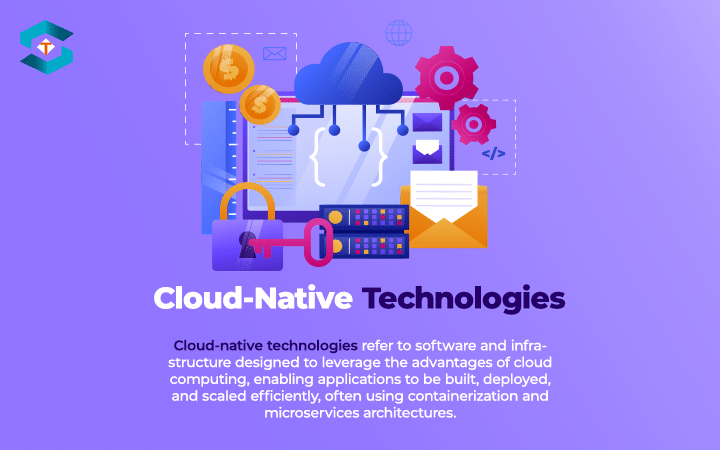5 Cloud Native Tips

Cloud native technologies have revolutionized the way applications are developed, deployed, and managed. By leveraging the power of the cloud, businesses can achieve greater scalability, flexibility, and resilience. However, to fully harness the benefits of cloud native, it’s essential to adopt the right strategies and best practices. Here are five cloud native tips to help you optimize your cloud native journey:
1. Embrace Microservices Architecture
Microservices architecture is a fundamental aspect of cloud native applications. This approach involves breaking down monolithic applications into smaller, independent services that communicate with each other through APIs. Microservices offer several benefits, including improved scalability, enhanced fault tolerance, and faster deployment cycles. By adopting microservices, you can develop and deploy individual services independently, reducing the complexity and risk associated with monolithic applications.
To implement microservices effectively, focus on the following: - Service Discovery: Implement a service discovery mechanism to manage the registration and discovery of microservices. - API Gateways: Use API gateways to provide a single entry point for clients and to handle tasks such as authentication, rate limiting, and caching. - Containerization: Utilize containerization technologies like Docker to package microservices and ensure consistent and reliable deployments.
2. Leverage Serverless Computing
Serverless computing is a cloud native paradigm that allows you to run applications without managing servers. With serverless, the cloud provider handles the infrastructure, and you only pay for the compute resources consumed by your applications. This approach can significantly reduce costs, improve scalability, and enhance developer productivity.
When adopting serverless computing, consider the following: - Function-as-a-Service (FaaS): Use FaaS platforms like AWS Lambda, Google Cloud Functions, or Azure Functions to run event-driven applications. - Event-Driven Architecture: Design event-driven architectures to handle asynchronous requests and to decouple microservices. - Serverless Databases: Choose serverless databases like AWS Aurora Serverless or Google Cloud SQL to provide automated scaling and cost optimization.
3. Implement observability and Monitoring
Observability and monitoring are critical components of cloud native applications. They provide insights into the performance, health, and behavior of your applications, allowing you to identify issues, optimize resources, and improve overall reliability.
To implement observability and monitoring effectively: - Logging and Tracing: Use logging and tracing tools like ELK Stack, Prometheus, or OpenTelemetry to collect and analyze application logs and traces. - Metrics and Alerting: Implement metrics and alerting systems like Prometheus, Grafana, or PagerDuty to monitor application performance and to receive notifications about potential issues. - Distributed Tracing: Utilize distributed tracing tools like Jaeger or Zipkin to visualize the flow of requests through microservices and to identify performance bottlenecks.
4. Adopt Continuous Integration and Continuous Deployment (CI/CD)
CI/CD is a cloud native best practice that involves automating the build, test, and deployment of applications. By adopting CI/CD, you can improve developer productivity, reduce the risk of errors, and achieve faster time-to-market.
When implementing CI/CD, focus on the following: - Automation: Automate build, test, and deployment processes using tools like Jenkins, GitLab CI/CD, or CircleCI. - Infrastructure-as-Code (IaC): Use IaC tools like Terraform, AWS CloudFormation, or Azure Resource Manager to manage and provision cloud infrastructure. - Continuous Monitoring: Integrate continuous monitoring into your CI/CD pipelines to ensure that applications meet performance, security, and quality standards.
5. Ensure Security and Compliance
Security and compliance are essential aspects of cloud native applications. They involve protecting sensitive data, ensuring regulatory compliance, and mitigating potential risks.
To ensure security and compliance: - Identity and Access Management (IAM): Implement IAM policies and best practices to control access to cloud resources and to ensure least privilege access. - Encryption and Key Management: Use encryption and key management tools like AWS Key Management Service (KMS) or Google Cloud Key Management Service (KMS) to protect sensitive data. - Compliance and Governance: Establish compliance and governance frameworks to ensure regulatory compliance and to mitigate potential risks.
What are the benefits of adopting a cloud native approach?
+The benefits of adopting a cloud native approach include improved scalability, enhanced flexibility, increased resilience, and reduced costs. Cloud native applications can be developed and deployed quickly, allowing businesses to respond rapidly to changing market conditions and customer needs.
How do I get started with cloud native?
+To get started with cloud native, focus on adopting cloud native principles and best practices. This includes embracing microservices architecture, leveraging serverless computing, implementing observability and monitoring, adopting CI/CD, and ensuring security and compliance. Choose the right cloud native tools and technologies for your needs, and develop a cloud native strategy that aligns with your business goals.
By following these cloud native tips and best practices, you can unlock the full potential of the cloud and achieve greater scalability, flexibility, and resilience. Remember to stay agile, be open to new ideas and technologies, and continually monitor and improve your cloud native applications to ensure they meet the evolving needs of your business and customers.


